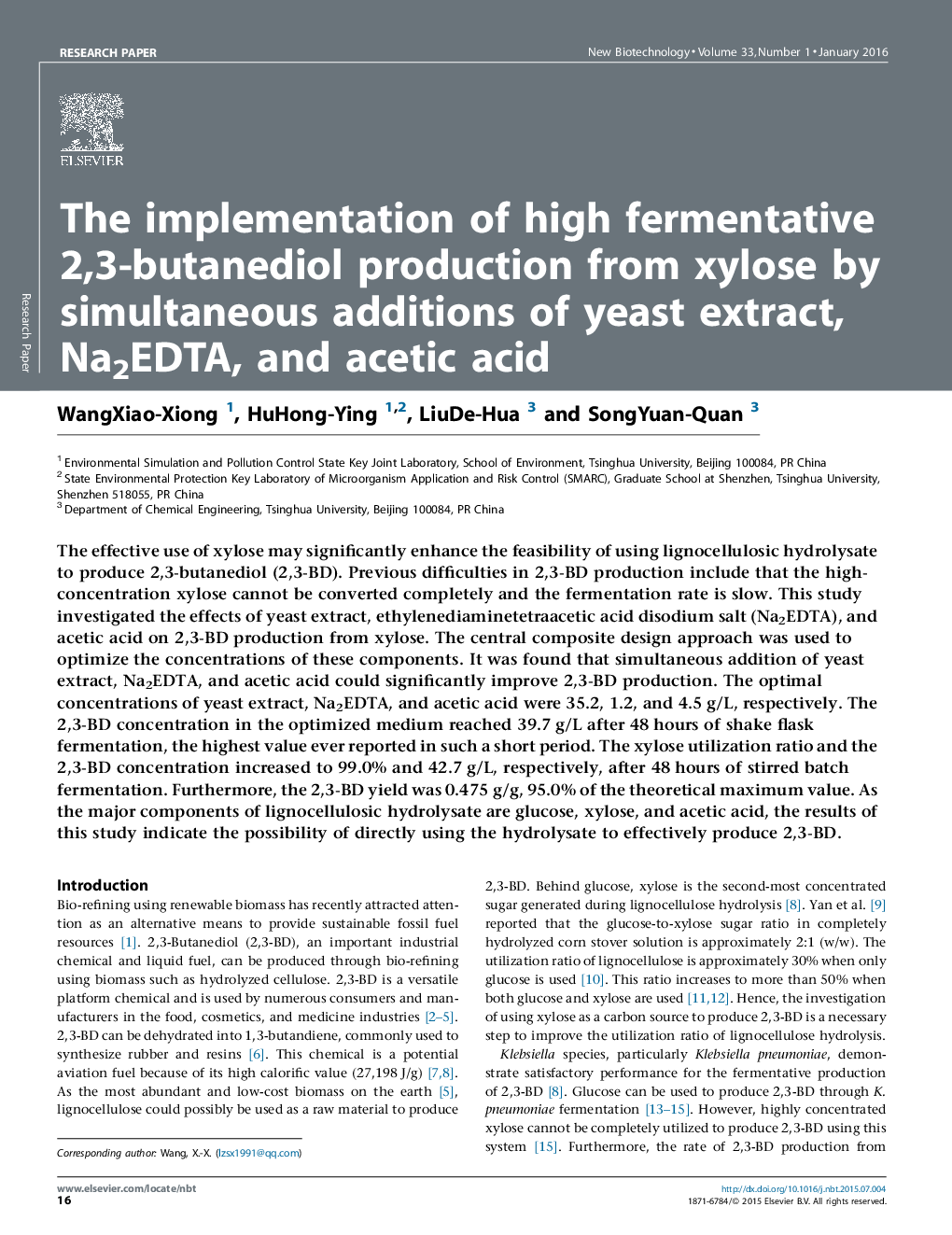| کد مقاله | کد نشریه | سال انتشار | مقاله انگلیسی | نسخه تمام متن |
|---|---|---|---|---|
| 33032 | 44954 | 2016 | 7 صفحه PDF | دانلود رایگان |

• Yeast extract, Na2EDTA, and acetic acid can improve 2,3-BD productions from xylose.
• 2,3-BD reached 39.7 g/L in shake flask fermentation, the highest ever reported.
• 99% xylose was used and 2,3-BD yield (0.475 g/g) was 95% of the theoretical maximum.
The effective use of xylose may significantly enhance the feasibility of using lignocellulosic hydrolysate to produce 2,3-butanediol (2,3-BD). Previous difficulties in 2,3-BD production include that the high-concentration xylose cannot be converted completely and the fermentation rate is slow. This study investigated the effects of yeast extract, ethylenediaminetetraacetic acid disodium salt (Na2EDTA), and acetic acid on 2,3-BD production from xylose. The central composite design approach was used to optimize the concentrations of these components. It was found that simultaneous addition of yeast extract, Na2EDTA, and acetic acid could significantly improve 2,3-BD production. The optimal concentrations of yeast extract, Na2EDTA, and acetic acid were 35.2, 1.2, and 4.5 g/L, respectively. The 2,3-BD concentration in the optimized medium reached 39.7 g/L after 48 hours of shake flask fermentation, the highest value ever reported in such a short period. The xylose utilization ratio and the 2,3-BD concentration increased to 99.0% and 42.7 g/L, respectively, after 48 hours of stirred batch fermentation. Furthermore, the 2,3-BD yield was 0.475 g/g, 95.0% of the theoretical maximum value. As the major components of lignocellulosic hydrolysate are glucose, xylose, and acetic acid, the results of this study indicate the possibility of directly using the hydrolysate to effectively produce 2,3-BD.
Journal: New Biotechnology - Volume 33, Issue 1, 25 January 2016, Pages 16–22